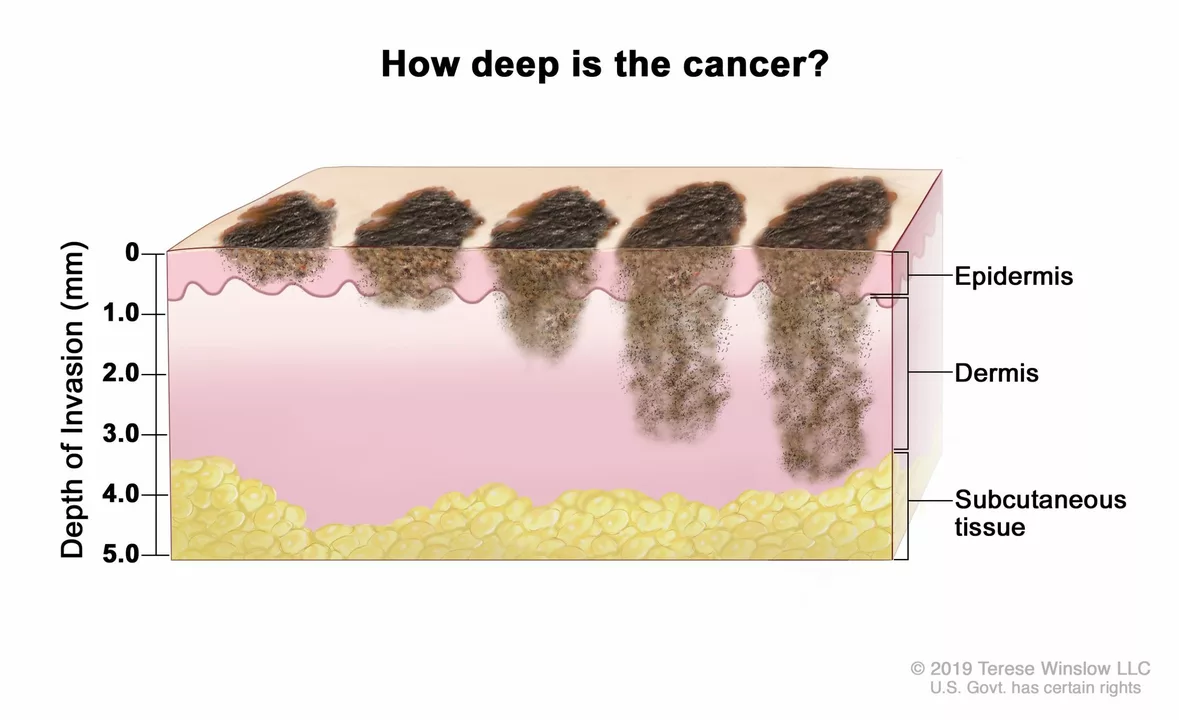Unlocking the Secrets of Melanoma: How Genetics Play a Role
As we dive into the world of melanoma, it's essential to understand the role genetics plays in the development of this aggressive form of skin cancer. In this article, we will explore six key areas that illustrate the connection between genetics and melanoma.
1. The Genetic Basis of Melanoma Risk
It's known that genetics can significantly impact an individual's risk of developing melanoma. Certain gene mutations have been identified that increase the likelihood of this skin cancer. For instance, mutations in the BRAF, NRAS, and KIT genes are commonly found in melanoma patients. Moreover, familial melanoma, which accounts for about 10% of all cases, is associated with inherited genetic mutations such as CDKN2A and CDK4. By understanding these genetic risk factors, we can better identify those at a higher risk and implement preventive measures.
2. The Role of Ultraviolet (UV) Radiation in Melanoma Development
Although genetics play a significant role in melanoma development, environmental factors like ultraviolet (UV) radiation exposure are also crucial contributors. Studies have shown that exposure to UV radiation, either from the sun or tanning beds, can cause DNA damage in skin cells. This damage can lead to mutations in genes that control cell growth and division, ultimately resulting in the formation of melanoma. While some individuals may have a genetic predisposition to melanoma, limiting exposure to UV radiation remains a critical preventative measure for everyone.
3. The Connection between Moles and Melanoma
Interestingly, genetics also play a role in the formation of moles, which can be a precursor to melanoma. Research has shown that individuals with a higher number of moles, known as atypical nevi, are at an increased risk of developing melanoma. This is partly due to the fact that these moles contain cells with genetic mutations that make them more susceptible to turning into cancerous cells. Monitoring and tracking the appearance and changes in moles is essential for early detection and prevention of melanoma.
4. The Impact of Skin Type and Hair Color on Melanoma Risk
Genetics also determine an individual's skin type and hair color, which can influence their risk of developing melanoma. People with fair skin, light eyes, and red or blonde hair are at a higher risk due to the lower levels of melanin in their skin. Melanin provides some protection against UV radiation, and lower levels result in more significant DNA damage upon sun exposure. Understanding one's genetic predisposition based on skin type and hair color is critical for implementing appropriate sun protection measures and reducing melanoma risk.
5. The Role of Immune System Genetics in Melanoma Development
Another intriguing link between genetics and melanoma lies within the immune system. Certain genetic variations can affect the immune system's ability to recognize and destroy cancer cells, leading to an increased risk of melanoma. Additionally, some gene mutations can cause an overactive immune response, resulting in chronic inflammation that can promote melanoma development. As the scientific community continues to investigate the connection between the immune system and melanoma, this knowledge could potentially lead to new immunotherapy treatments and prevention strategies.
6. The Future of Melanoma Research and Genetic Testing
As our understanding of the relationship between genetics and melanoma advances, so does the potential for improved prevention, detection, and treatment options. Genetic testing for melanoma risk is now available, allowing individuals to learn if they carry specific gene mutations that may increase their risk. The information gained through genetic testing can help guide personalized prevention strategies, like regular skin checks and sun protection measures tailored to an individual's risk level. Furthermore, ongoing research into the genetic basis of melanoma may lead to the development of targeted therapies that can effectively treat this aggressive form of skin cancer.
In conclusion, understanding the role of genetics in melanoma development is crucial for identifying those at risk, implementing effective prevention measures, and advancing the development of targeted treatments. By exploring these six key areas, we can gain a deeper appreciation for the complex interplay between genetics and melanoma and work together to reduce the burden of this devastating disease.






Comments (20)